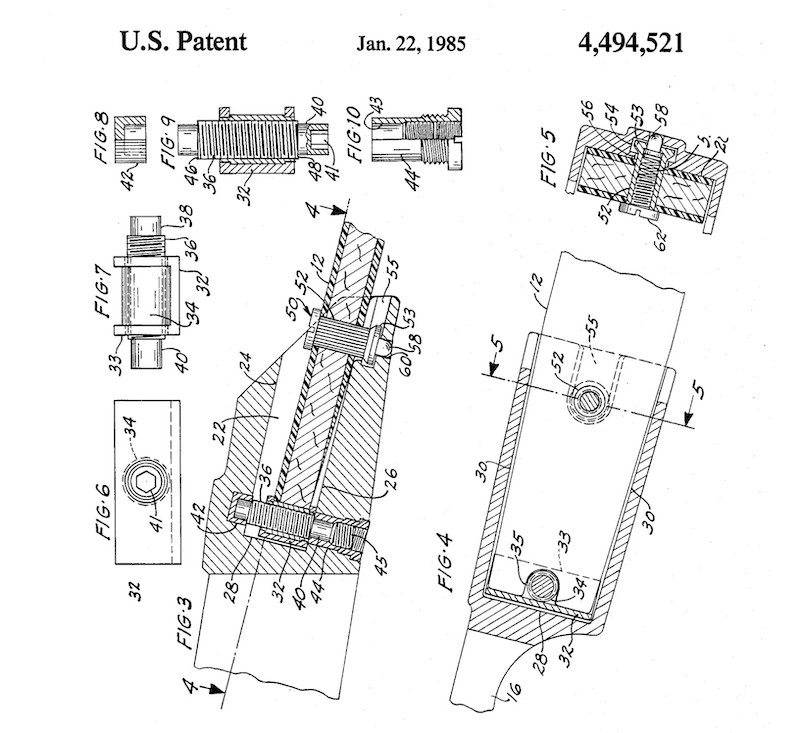If you’re interested in barebow, traditional or Olympic recurve archery, you have many great equipment options, including the popular ILF bow.
To better understand the ILF recurve’s features, and answer common questions about it, we talked to Doug Denton, Hoyt Archery’s recurve brand manager. Denton designed the bow Brady Ellison used to break the 70-meter world record.
What does ILF mean?
ILF stands for “international limb fitting.” This universal system lets archers mate an ILF riser to ILF limbs.
Are all ILF limbs interchangeable?
Denton said ILF interchangeability isn’t guaranteed because some manufacturers measure their fittings slightly different. However, most ILF limbs from one manufacturer will fit another manufacturer’s ILF riser.
Which adjustments do ILF bows offer?

One advantage of ILF bows is their tuning adjustments. “Most high-end risers and many budget risers have a lateral limb adjustment, which lets you line up the top and bottom limb with the riser’s centerline,” Denton said. That way both limbs are on the same plane.”
ILF risers also allow tiller and draw-weight adjustments. Tighten the tiller bolts to increase draw weights, and loosen the bolts to decrease draw weights. The adjustment amounts vary by manufacturer.
Denton said Hoyt risers can be backed out six turns from their max setting. Hoyt measures its limbs at the middle setting, which is three turns out from the max setting. “From the middle setting, if you crank it in three turns, you increase the draw weight about 1½ pounds, and if you bring it out three turns, you reduce the draw weight 1½ pounds,” Denton said. That 1½-pound adjustment range is a rule of thumb. In some configurations it’s closer to 2 pounds.
Tiller adjustment is important because it helps the limbs bend in unison. You adjust it with both tiller bolts, but instead of evenly adjusting them as you do with draw weights, you change the tiller with one small adjustment.
“For the most part, our Olympic-level shooters make a 1/8-inch positive tiller,” Denton said. That means the measurement from the top limb’s base to the bowstring is 1/8-inch longer than the same measurement on the bottom limb. The 1/8-inch positive tiller works for most people, but don’t be afraid to try other settings.
“It depends on how an archer grips the string, the pressures they put into the bow, and how they like to tune the bow,” Denton said. “Archery is so individualized. You don’t need to box yourself into standard settings.”
How do you decide what draw weight and bow length to buy?

ILF risers and limbs vary in length. Also, limb draw weights vary from the marked weight depending on each archer’s draw length.
You must know your draw length to determine which weight limbs and bow length to buy. Visit an archery shop and ask the staff to measure your draw length. That measurement lets them calculate which limbs to order.
Most manufacturers use a 25-inch riser and measure the draw weight on their limbs at a 28-inch draw length. Limbs marked 42 pounds, for example, pull 42 pounds at a 28-inch draw length. The draw weight at shorter or longer draw lengths varies. In general you’ll gain 2 pounds for every inch you draw past 28 inches. So, if you have a 29-inch draw and you buy a 42-pound limb set, they’ll pull 44 pounds at your draw length. For every inch under 28 inches, subtract 2 pounds.
Riser length is another variable to consider. Most risers measure 25 inches, but 27, 23 and shorter hunting risers are also available. “If you take a 42-pound medium set of limbs and put them on a 23-inch riser, you’ll have a 66-inch bow and a 44-pound draw weight,” Denton said. “When you go to a 27-inch riser, subtract 2 pounds from the marked weight.”
Riser length and limb length determine bow length. Limbs come in short, medium and long lengths. A 25-inch riser with short limbs measures 66 inches tip to tip, but when fitted with medium limbs it measures 68 inches. Even longer limbs make a 70-inch bow.
Personal preferences determine your draw length and bow length.
Bow-Length Recommendations
- 66-inch bow for 26½-inch draw length and shorter.
- 68-inch bow for draw lengths between 26½ and 29 inches.
- 70-inch bow for draw lengths 29 inches or longer.
These are general guidelines. As you try different bow lengths, you might find you enjoy a shorter or longer bow. Denton, for example, suggests 68-inch bows for draw lengths between 28 and 30 inches.
“For the most part, I recommend a 25-inch riser unless it’s a youth archer who needs a lighter mass weight, where a 23-inch riser would be beneficial,” Denton said.
A final tip for newcomers: Start with a low draw weight. “The most common mistake new recurve archers make is starting out with too much draw weight,” Denton said. “I always recommend new archers start with 20 to 24 pounds.”
Now that you know ILF recurve basics, you can head to an archery shop to start the buying process. Click here to find a nearby shop where expert staff will help you choose a bow, tune it, and teach you to shoot.




